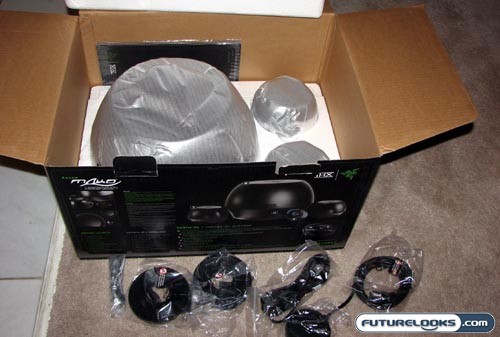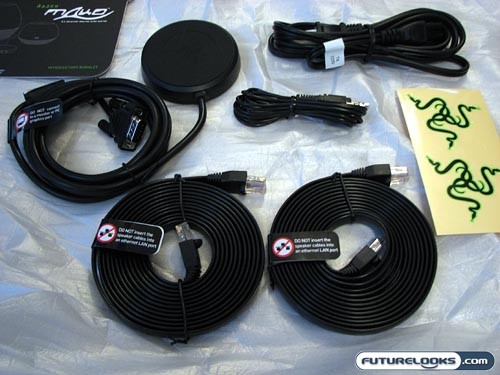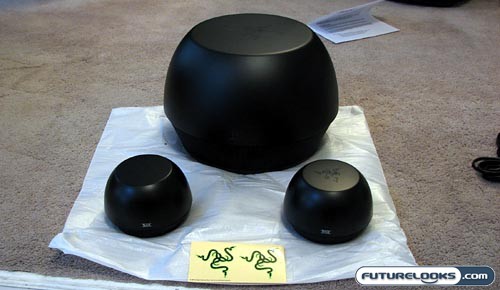Razer is a company that prides itself in designing products for gamers, by gamers. We’ve already seen what Razer is capable of when it comes to crazy computer mice and “gaming surfaces”, but what about something a little more substantial? Well, the speakers that are built into my Dell laptop are pretty anemic at best, so I approached the newly launched Razer Mako THX speakers with completely open arms. And the 2.1 system absolutely blew me away. Yes, they are that good.
First Impressions
Like most other Razer products, the Mako THX 2.1 speaker system comes in a matte black box with a few green highlights and stylized font. Opening up the box, you discover that everything has been packed very carefully, meticulously protected with a styrofoam skeleton.

Diving deeper into the box, I came across at least a couple of pleasant surprises. First, the speakers themselves are highly attractive, boasting a brilliant matte black finish that can be discretely hidden away on your desktop or amongst your home theater components. At the same time, the design is decidedly high-end and any visitor to your home will be drawn to your proudly displayed speakers. They’ll know that they’re expensive just by looking at them.
The speakers themselves are shaped almost like down-turned bowls. Others may say that the speakers look like little black mushrooms (Nintendo fanboys and fangirls probably prefer that analogy). Whatever you think they look like, I think that the Mako speakers look great. The faint Razer logo on the top of each speaker is an especially nice touch. The subwoofer is essentially a larger version of the two satellites, so you get a very “complete” package. Everything fits together perfectly. Oh, and the speakers have been individually protected in foamy bags of their own.
The other significant surprise is the connection configuration for the Razer Mako speaker system. While most systems of this kind make use of standard speaker wire, the Mako actually connects the subwoofer (which also serves as the digital amplifier) to the two satellites via flat CAT5 cables, not unlike those you’d use for your wireless router. In fact, there is a clear note on the provided cables that reminds you not to connect the speakers to your computer’s LAN port.

I wasn’t brave enough to find out what what happen if I were to do that, but I did try using generic Ethernet cables to connect the satellite speakers to the subwoofer. What happens is that the middle section of the control pod starts to blink and no sound is pumped out of the speakers. Looks like they’re using some sort of proprietary solution.
The provided controller, which I will discuss in a moment, also connects to the subwoofer in an interesting way; it’s a VGA/RGB cable. Like the CAT5 speaker cables, there is a warning not to connect the controller to a monitor or your computer’s graphics port.

